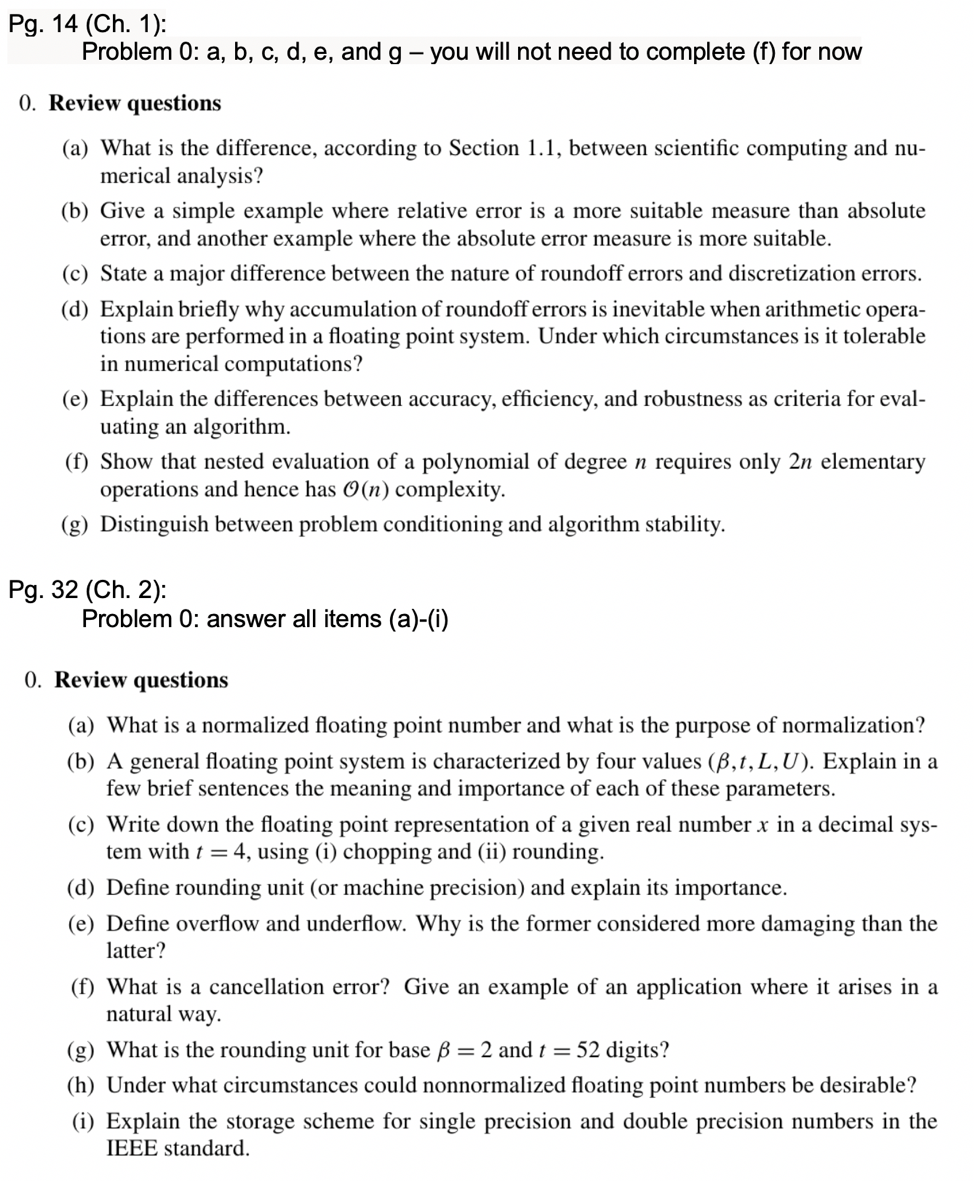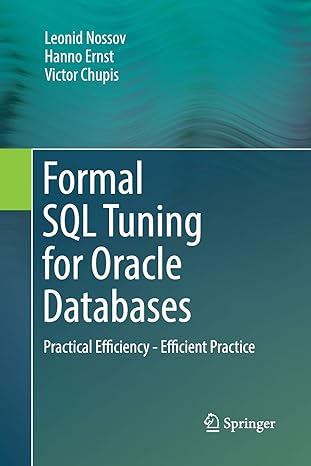
Pg. 14 (Ch. 1): Problem 0: a, b, c, d, e, and g - you will not need to complete (f) for now 0. Review questions (a) What is the difference, according to Section 1.1, between scientific computing and nu- merical analysis? (b) Give a simple example where relative error is a more suitable measure than absolute error, and another example where the absolute error measure is more suitable. (c) State a major difference between the nature of roundoff errors and discretization errors. (d) Explain briefly why accumulation of roundoff errors is inevitable when arithmetic opera- tions are performed in a floating point system. Under which circumstances is it tolerable in numerical computations? (e) Explain the differences between accuracy, efficiency, and robustness as criteria for eval- uating an algorithm. (f) Show that nested evaluation of a polynomial of degree n requires only 2n elementary operations and hence has 0 (n) complexity. (g) Distinguish between problem conditioning and algorithm stability. Pg. 32 (Ch. 2): Problem 0: answer all items (a)-(i) 0. Review questions (a) What is a normalized floating point number and what is the purpose of normalization? (b) A general floating point system is characterized by four values (B,1,L,U). Explain in a few brief sentences the meaning and importance of each of these parameters. (c) Write down the floating point representation of a given real number x in a decimal sys- tem with t = 4, using (i) chopping and (ii) rounding. (d) Define rounding unit (or machine precision) and explain its importance. (e) Define overflow and underflow. Why is the former considered more damaging than the latter? (f) What is a cancellation error? Give an example of an application where it arises in a natural way. (g) What is the rounding unit for base B = 2 and t = 52 digits? (h) Under what circumstances could nonnormalized floating point numbers be desirable? (i) Explain the storage scheme for single precision and double precision numbers in the IEEE standard







